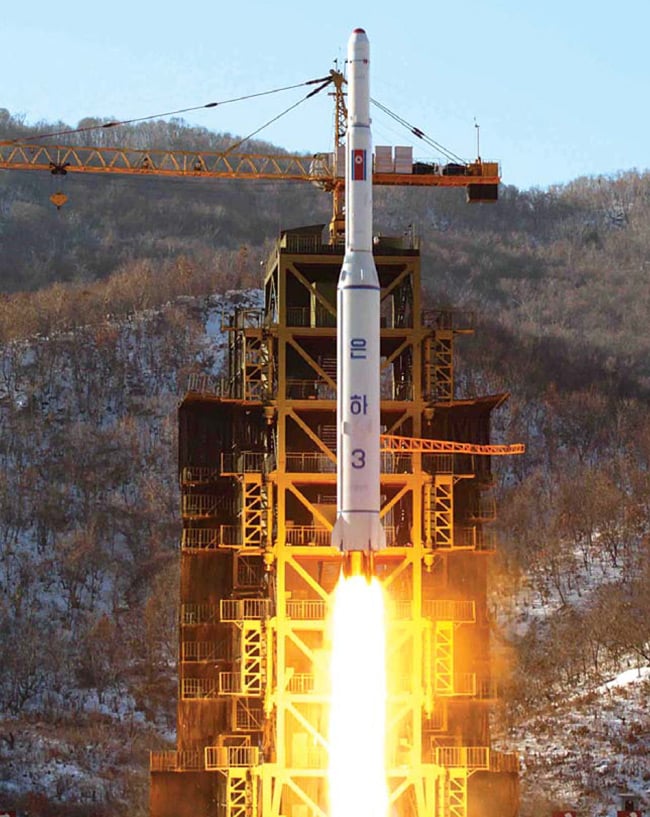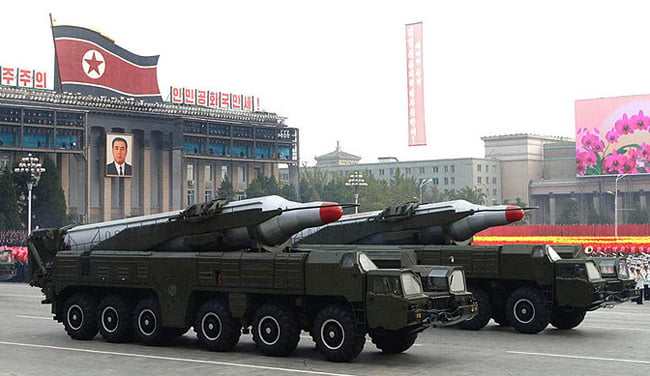This article is more than 1 year old
Silent Nork satellite tumbling in orbit
Pyongyang not yet ready to nuke California
North Korean "Earth observation" satellite Kwangmyongsong-4 is "tumbling in orbit", according to US officials, suggesting a second failure by Pyongyang to get a functioning satellite aloft.
Kwangmyongsong-4 launched on Saturday, to widespread international condemnation. The satellite has remained silent - as did its predecessor Kwangmyongsong-3 - which entered orbit back in December 2012.
As we put it yesterday: "The fact that Norks would send an uncommunicative lump into space, with no telemetry or data transmitted to Earth, is one of the reasons the rest of the world suspects the launches are ballistic missile tests."
Both Kwangmyongsongs 3 and 4 were carried aloft by an Unha rocket - a three-stage vehicle initially lifted by four clustered Rodong-1 engines, based on Soviet SS-1 "Scud" powerplants. The second stage may be based on the Soviet R-27 Zyb, but is more likely another adaptation of Scud tech.

The Unha-3-2 lifts Kwangmyongsong-3 in December 2012
The third stage is possibly based on part of Iran's Safir programme.
While it's clear that North Korea is using adapted ICBM tech, it's debatable how much of a military threat its missile capability actually poses. Back in 2013, UK prime minister David Cameron declared that "North Korea has the capability to launch a missile strike against the the US and the UK", following Pyongyang's claim that it had deployed a couple of missiles on its eastern coast "capable of striking South Korea, Japan and US bases in the Pacific".
However, we noted in our 2013 overview of Nork missile tech that the BM25 Musudan in question - a trailer-launched intermediate-range ballistic missile (IRBM) based on the aforementioned R-27 Zyb - was merely theoretically capable of hitting these targets.

Probably not the real deal: Musudans on parade in Pyongyang in October 2010
Experts at the time assured there was "no indication that the Musudan is operational or that it has ever been tested", and this remains the case. It's believed that Musudans paraded in the North Korean capital in 2010 were mock-ups.
The Unha rocket is real enough, though. Whether North Korea really intends it as a space launch vehicle or an ICBM remains to be seen.
The Washington Post warned yesterday that "the West Coast of the United States is within reach" of Unha.
The paper crucially added, albeit under the crosshead "Wait, did you just say that North Korea can now strike California?": "An intercontinental missile capable of delivering a payload needs to be able to re-enter the atmosphere without breaking up; we don’t know if North Korea has mastered that part yet."
The answer is probably not, and even if it has cracked the necessary re-entry problem, there's no solid evidence that North Korea is close to developing a nuclear weapon compact enough for ICBM use. ®
Bootnote
Chillingly, Kwangmyongsong-4 passed over Levi's Stadium in California on Sunday, just one hour after the end of Super Bowl 50. The Huffington Post brilliantly says it's unclear "if the trajectory was deliberate or a coincidence".
